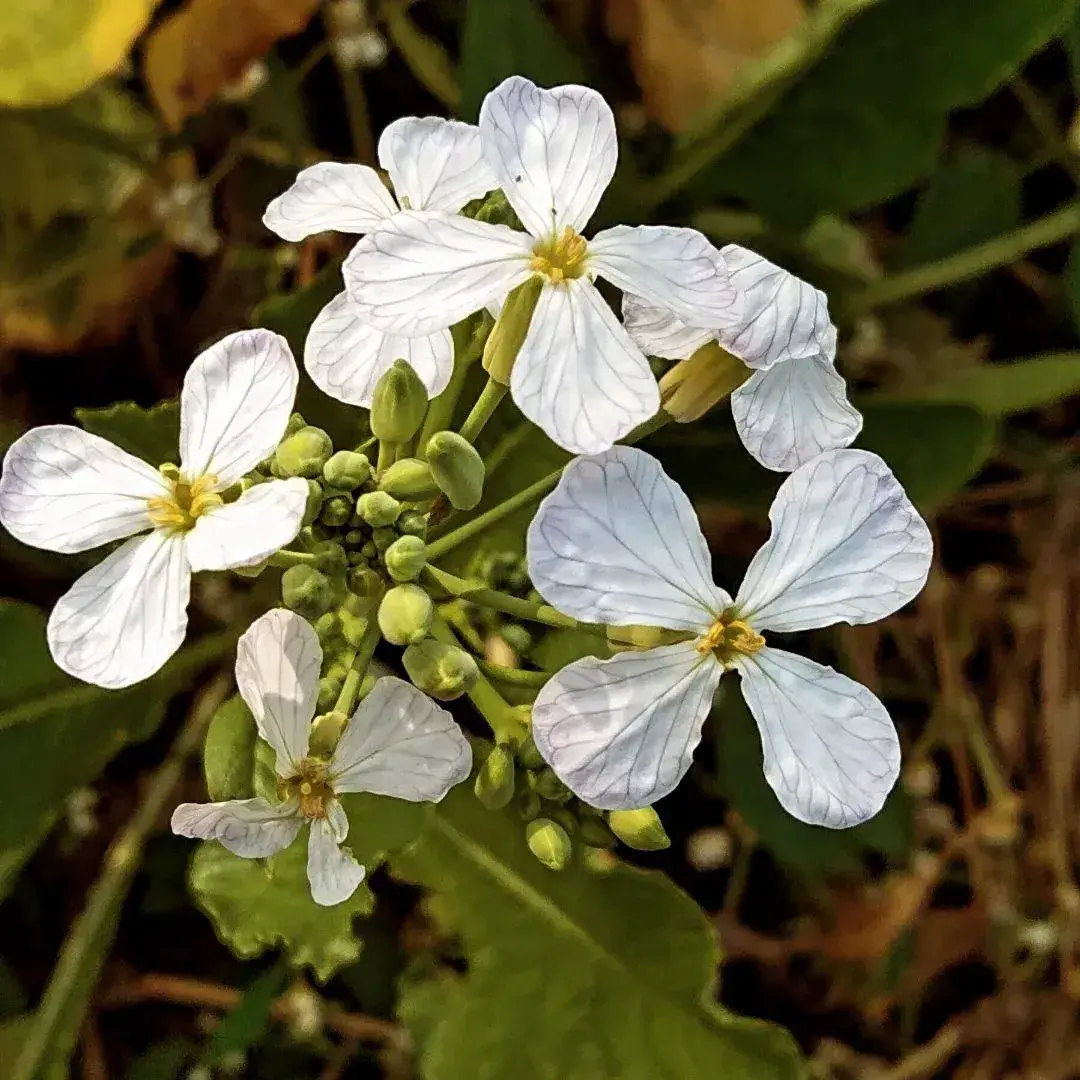
Wild radish (Raphanus raphanistrum)
Wild radish, also known as Wild Radish, Jointed Charlock
The wild radish (Raphanus raphanistrum) is a versatile plant with several edible parts, each offering unique flavors and uses. Here’s how you can enjoy them:
1. **Leaves**: Young leaves are tender and can be eaten raw in salads or sandwiches, adding a peppery note. Older leaves are better cooked, similar to how you would prepare spinach or kale.
2. **Flowers**: These can be used fresh in salads to add both color and a mild, radish-like taste.
3. **Seed Pods**: When young and tender, seed pods can be a crunchy, raw snack, or they can be added to salads. They are also delicious when pickled or lightly stir-fried.
4. **Roots**: The roots can be consumed after peeling away the tough outer layer. They can be grated raw into salads for a spicy kick, or cooked by roasting or boiling to soften their texture and mellow their flavor.
Always ensure correct identification and avoid plants exposed to chemicals or pollutants.
Key Facts About Wild radish
Attributes of Wild radish
Scientific Classification of Wild radish
Toxicity
Ingestion